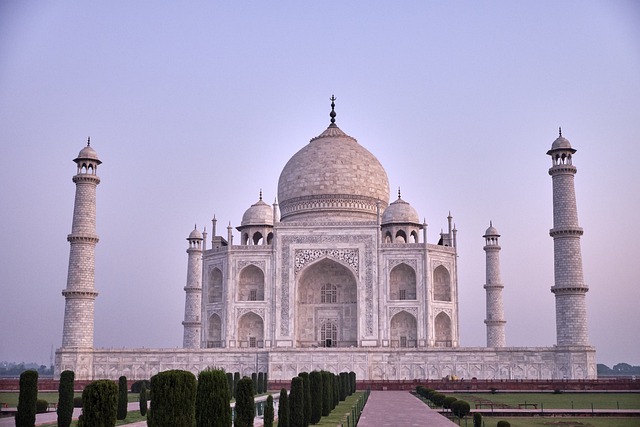Understanding the Largest Platform in India Today
Author: Jameson Richman Expert
Published On: 2025-10-21
Prepared by Jameson Richman and our team of experts with over a decade of experience in cryptocurrency and digital asset analysis. Learn more about us.
Largest platform in India is a phrase that can mean many things: the site or service with the most users, the platform processing the most transactions, or the marketplace with the biggest gross merchandise value (GMV). This article explains what “largest platform in India” means across categories (social, e-commerce, payments, fintech, and enterprise), compares leading platforms using measurable metrics, and offers actionable guidance for businesses and marketers who want to leverage India’s dominant digital ecosystems.

What “largest platform in India” really means
The term “largest platform in India” is ambiguous unless you specify the metric. A platform can be the largest by:
- Monthly active users (MAU) — useful for social and messaging platforms.
- Transactions processed or volume — relevant for payments (UPI), fintech, and marketplaces.
- Revenue and valuation — used when comparing companies like Jio Platforms, Flipkart, or Paytm.
- Gross merchandise value (GMV) — important for e-commerce marketplaces.
- Developer and partner ecosystem size — for cloud, enterprise, and API-driven platforms.
Understanding which metric matters most for your goals determines which platform you should evaluate and target.
Top categories: who claims “largest platform in India” by metric
1. Messaging and social platforms (MAU)
By MAU, messaging and video platforms dominate daily digital engagement. Key players:
- WhatsApp — Widely regarded as the largest messaging platform in India by user base. It is the primary communication channel for hundreds of millions of Indians and is a major hub for consumer interaction and small-business outreach. For background on its scale and role, see the WhatsApp overview on Wikipedia.
- YouTube — The largest video platform by time spent and content reach, driving discovery for creators and brands alike. See YouTube’s global and regional significance via its Wikipedia entry: YouTube on Wikipedia.
- Facebook/Instagram (Meta) — Major social platforms for advertising and audience-building with deep targeting capabilities.
2. E-commerce marketplaces (GMV and reach)
In e-commerce, GMV and monthly active buyers indicate platform size:
- Amazon India — A top contender by product breadth and logistics investment. Amazon Prime membership and deep seller infrastructure make it one of the largest e-commerce platforms in India by revenue and market share. Reference: Amazon India’s presence is summarized on Amazon (Wikipedia).
- Flipkart — Often the leading domestic marketplace by GMV, particularly in festive seasons. Flipkart’s scale after Walmart’s acquisition places it among India’s largest platforms by commerce activity. See Flipkart on Wikipedia.
- Reliance’s JioMart — Backed by Reliance Jio Platforms, JioMart targets grocery and local commerce and benefits from integration with Jio’s telecom scale.
3. Payments and transaction platforms (volume)
India’s payments ecosystem is platform-centric, where transaction volume is the crucial measure:
- UPI (Unified Payments Interface) — Not a company but a nationwide payments platform operated by the National Payments Corporation of India (NPCI). UPI processes billions of transactions and is arguably the largest payments platform in India by transactions and volume. See NPCI’s official site for current stats: NPCI — UPI statistics.
- Paytm — One97 Communications’ Paytm is a pioneer in mobile wallets and payments, offering a broad range of financial services and merchant tools.
- Banks and wallets — Many banks and wallets now rely on UPI rails, making the entire ecosystem an immense platform for commerce and P2P transfers.
4. Fintech and crypto platforms
Fintech platforms differ by product focus — lending, broking, or crypto trading:
- Stock and broking platforms (e.g., Zerodha) — Leaderboards by active clients and trade volume show large retail participation on a few platforms.
- Crypto exchanges (e.g., WazirX, CoinDCX) — These platforms serve crypto traders and investors. If you want to learn how crypto trading works in India and what to know before entering markets, this crypto trading guide is a useful primer.
- Derivatives and margin trading platforms — For advanced traders using leverage, educational resources can help. For example, a detailed guide on changing leverage on Bybit can assist experienced traders to manage risk: how to change leverage during trading on Bybit.
5. Enterprise and cloud platforms
Enterprise platforms combine developer ecosystems, cloud infrastructure, and partner networks:
- Tata Consultancy Services (TCS), Infosys, and other IT majors — Not platforms in the consumer sense, but their B2B platforms power enterprise workflows globally.
- Jio Platforms — With Jio’s telecom base, Jio Platforms aims to build integrated services (JioMart, JioSaavn, JioCinema) making it one of the most strategically important digital platform ecosystems in India.
Which platform is the largest in India — a practical ranking
Instead of one absolute “largest platform in India,” consider category leaders:
- WhatsApp — Largest by user count and daily engagement for messaging.
- YouTube — Largest by video consumption and creator reach.
- UPI — Largest payments platform by transaction volume (a nationwide infrastructure).
- Amazon India and Flipkart — Among the largest commerce platforms by GMV and buyer base.
- Jio Platforms — One of the largest integrated digital ecosystems by strategic reach and infrastructure.
Each of these “largest” platforms leads in different business metrics, so determine which metric aligns with your goals before prioritizing one.

Why size matters: business and marketing implications
Targeting the largest platform in India can unlock massive reach — but size isn’t everything. Here’s how to decide:
- Align with user intent: Large platforms attract broad audiences, but conversion depends on matching your offering to what users seek on that platform. For instance, WhatsApp works for service businesses and hyperlocal engagement, while Amazon is better for product retailers.
- Evaluate costs and margins: Listing fees, ad costs, and fulfillment obligations vary dramatically across platforms; large platforms can have more competition and higher acquisition costs.
- Measure channel-specific KPIs: Use MAU, conversion rate, customer acquisition cost (CAC), lifetime value (LTV), and repeat purchase rate to measure platform ROI.
- Comply with regulations: Payment and data regulations in India are evolving; platforms like UPI, banks, and fintechs follow distinct compliance regimes. Consult official sources such as the Reserve Bank of India for regulatory guidance.
Actionable playbook: how to win on India's largest platforms
Below are tactical, SEO-aligned actions to increase visibility and conversion on large Indian platforms.
1. Optimize platform content and listings
Each platform has its own discovery mechanism. Follow these steps:
- E-commerce marketplaces: Use keyword-rich titles, bullet-proof product descriptions, high-quality images, and A+ content where available. Monitor reviews and Q&A to improve conversion.
- App stores: Optimize app title, description, screenshots, and localized metadata. Use app-store keywords and encourage positive reviews.
- Social and search platforms: Create native content that fits the platform — short-form video for YouTube Shorts or Instagram Reels; conversation-first messaging on WhatsApp.
2. Use data-driven marketing
Leverage platform analytics — traffic sources, top-performing categories, A/B testing results — to refine campaigns. Large platforms provide ad analytics and audience insights; use them to reduce CAC and increase ROAS.
3. Localize and personalize
India is highly diverse. Successful brands localize language, payment methods, pricing, and logistics. Offer local payment options (UPI, wallets) and regional language content to maximize reach.
4. Build omnichannel presence
Don’t restrict yourself to a single platform. Combine social, marketplaces, owned website, and offline channels to spread risk and increase customer lifetime value (LTV).
5. Leverage partnerships and integrations
Integrate with platform APIs (e.g., payments, seller APIs, chatbots) to automate processes and provide a seamless customer experience. For enterprise use, consider official partner programs on Jio or AWS for India.
Measuring platform effectiveness: KPIs to track
Choose KPIs aligned with the platform’s role:
- Discovery platforms (YouTube, Instagram): Impressions, watch time, engagement rate, subscriber growth.
- Commerce platforms (Amazon, Flipkart): GMV, conversion rate, cart abandonment, average order value (AOV), seller rating.
- Payments (UPI, Paytm): Transaction volume, value, success rate, settlement speed.
- Customer support on messaging platforms (WhatsApp): Response time, resolution rate, NPS.

Case studies and examples
Flipkart vs Amazon India — festival season dynamics
During India’s major sale periods, platforms drive massive spikes in traffic and GMV. Flipkart historically focuses on localized seller engagement and strong in-house logistics during elections or big festivals; Amazon India invests in Prime benefits and cross-border inventory. For sellers, choosing one or both platforms can provide diversification — but expect heightened competition and promotional requirements.
UPI — a payments revolution
UPI transformed transactions by enabling instant, low-cost transfers for both consumers and merchants. Any business tapping large consumer platforms should support UPI to reduce friction and improve conversion. NPCI’s aggregated data shows UPI’s scale and steady adoption across merchant categories; see NPCI’s official portal for updated metrics: UPI product overview (NPCI).
Crypto platforms and advanced trading
Crypto exchanges in India serve niche but growing audiences. If you target crypto traders, educational content and trust signals are critical. For traders who use leverage and derivatives, operational knowledge is key — a practical guide on leverage management and platform features (for example on Bybit) can help advanced traders manage risk: how to change leverage during trading on Bybit. For a broader primer on crypto trading basics, see this resource: how is crypto trading done and what you need to know.
If you analyze market dynamics for Bitcoin specifically, trends and outlooks can shape platform liquidity and trader behavior; for example, detailed market analysis may help plan product launches or marketing: Bitcoin market dynamics and trends.
Regulatory and compliance considerations
Operating on or with large platforms in India requires awareness of regulatory obligations:
- Data protection: India’s evolving data protection landscape affects how platforms collect and store data. Check guidelines from the Ministry of Electronics and Information Technology (MeitY): MeitY — Government of India.
- Payments regulation: Businesses handling payments must comply with RBI and NPCI rules for KYC, settlements, and dispute resolution. See the Reserve Bank of India for official rules and circulars.
- Consumer protection: Platforms must adhere to the Consumer Protection Act and e-commerce rules that cover transparency, returns, and seller obligations.
Choosing the right “largest platform in India” for your goals
To pick the optimum platform:
- Define your objective — awareness, sales, traffic, or transactions?
- Match the metric — choose platforms that lead in the matching metric (MAU, GMV, transactions).
- Assess costs and competition — large reach comes with competition. Model CAC vs LTV.
- Test and iterate — run pilot campaigns, track KPIs, and scale what works.

SEO and content strategy to capture platform-driven traffic
Even on third-party platforms, SEO principles apply — optimize for discoverability and conversions:
- Keyword strategy: Use platform-specific keywords and long-tail phrases reflecting user intent. For instance, e-commerce titles should include “brand + product + size + feature” sequences.
- Content clusters: Build topical authority around high-value categories. On a blog or owned site, link to platform listings, FAQs, and case studies to funnel organic traffic to your platform pages.
- Structured data: Use schema markup on your owned pages to increase the chance of rich results that drive clicks and trust.
- Backlinks and authority: Earn links from high-authority domains (educational, government, industry bodies). For example, referencing authority sites like Wikipedia or government portals can strengthen topical signals.
Risks and mitigation when relying on large platforms
Large platforms are powerful but risky if you rely on them exclusively:
- Policy changes: Platform rule changes can suddenly alter traffic or fees. Maintain a buffer in your business model.
- Competition and price wars: Many sellers compete on price. Differentiate through branding and service.
- Data portability: If a platform controls customer data, design ways to capture first-party data (email, preferences) to reduce dependence.
Future trends: what will define the largest platform in India?
Several trends will influence which platforms are considered “largest” in coming years:
- Integration and super-apps: Platforms combining messaging, payments, commerce, and entertainment (super-app models) may grow fastest because of cross-service synergies.
- Local language and voice: Platforms that excel at regional languages and voice interfaces will capture more users across India’s diverse markets.
- Embedded finance: Platforms offering credit, insurance, and savings directly in consumer flows will deepen engagement and monetization.
- Regulatory impact: New regulations on data and digital competition could reshape platform dominance, especially for foreign-owned services.

Conclusion
There is no single definitive “largest platform in India” — instead, the title depends on the metric you choose. Messaging platforms like WhatsApp dominate by users; UPI dominates by transaction volume; and marketplaces such as Amazon India and Flipkart lead in commerce GMV. Businesses should define the metric that matters for their objectives, optimize for platform-specific discovery and conversion, and diversify across channels to reduce risk. For sectors such as crypto trading, educate your audience and present clear risk management guidance; resources like how is crypto trading done, leverage management guides (for example how to change leverage on Bybit), and market analyses (see Bitcoin market trends) can help practitioners navigate complex markets.
Choose the largest platform in India that aligns with your KPI, optimize for its discovery mechanisms, and measure relentlessly. With the right approach, even niche businesses can scale quickly leveraging India’s massive digital audiences.